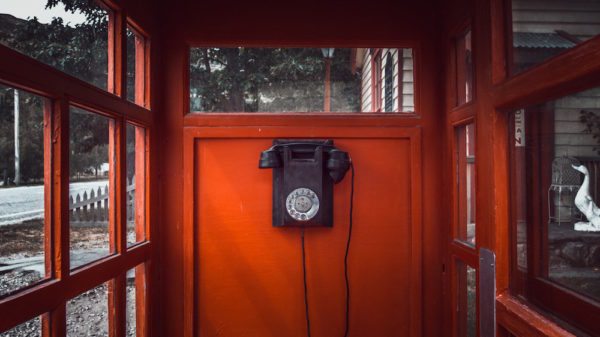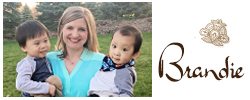“I don’t get it,” I said to my friend several years ago when she mentioned she was having her toddler evaluated by an early intervention team to assess his speech. “He’s not even two. He’s a late bloomer!” I assured her. I went on with anecdotes about our first born, now 15, who at two years old only had a handful of very unclear words. I remember leaving a list of translations for a friend who was babysitting him one day.
“Guk” means he wants milk. “You-ee” means juice.
While he didn’t have as many words as a little girl his age down the street, I wasn’t worried at the time about his language, and it never would have crossed my mind to seek early intervention. And in the end, he didn’t need it.
So when my friend expressed her concerns, I blew it off. After all, I was the confident mother of three very verbal kids. “He’ll catch up! Therapy is, like, the popular thing to do now. Everyone’s got kids in speech therapy or physical therapy. Let them be kids! They’ll get it.” (Fortunately, she listened to her maternal instincts and ignored my advice. Her child ended up in both speech therapy and occupational therapy.)
It wasn’t until we added our fifth child to our family through adoption in May of 2016 that I was forced to “get it.”
I had prepared myself for every possible scenario that could have come for his heart defect diagnosis, but we were in for many medical surprises and global delays that would challenge every attitude I had formed regarding therapies so long ago. While we have been fortunate enough to work through most of his challenges, we are still facing a speech delay. (The irony. Right?)

It was very early on that I noticed that we had bigger issues than a language barrier. Our newly adopted toddler, at 17 months old, was not only not talking, but he wasn’t really babbling either. He said some “ah” sounds but it was evident that there was no true speech or typical toddler “dada,” “gaga,” and “baba” jibberish. We began working with our early intervention team just weeks after we got home from China, but we were all aligned that for the time being, we should just give him some time and space to adjust to being in a new home around English speakers. Our world was so very different than he was used to in the foster home. We immediately began simple sign language like “more” and “all done” to begin a simple exchange of communication.
As weeks turned to months, Caston made huge leaps in some areas. For example, after several months home, Caston had begun walking, and he had overcome his previous feeding difficulties. In fact, after 14 months of being home, he happily ran over to the pantry, opened the door himself, climbed the stool, and selected his own snack. Once we had worked through feeding and gross motor challenges, we began focusing on speech.
Caston’s speech therapy began with early intervention services through our county program in December of 2016. Our speech language pathologist initially came every couple of weeks to give me ideas of how to elicit words from Caston. With our other children, I would have pointed to a picture in a book, and asked, “What is this? It’s a dog! Dog!” After playing this little sing-songy game a couple dozen times, they would have tried, “Da!” or something similar. But this approach wasn’t working for Caston. She suggested dialing it back and starting with just animal noises which were much more fun and appealing. One of our primary goals for Caston was just working on what she called environmental sounds: moooo, boom, beep beep, whoosh.
I had learned from my reading when my first child was a toddler to narrate our days to develop his language skills, so I was already very used to that. It was second nature to me to say things like, “Ok! Time to go to the grocery store! Let’s get your shoes on. Here are your shoes! Let’s put your blue shoe on your left foot. Now, let’s put your blue shoe on your right foot. All done! Let’s go to the car.” Now though, I needed to incorporate more interesting, easier to reproduce sounds for him to engage his desire for language. It wasn’t simply, “The cow says, ‘moo.’” It was, “The cow says, ‘Moooooooooo! Mmmmmmmmmm. Mmmmmmmmmm. Mmmmmmmm. Mmmmmmmmoooooooo.’” I onomatopoeia-ed our world to death sometimes it seemed, giving every person, animal, thing, and action its own sound.
In February of 2017, Caston was diagnosed with hearing loss. “Aha!” I thought. “That’s why he’s not talking. Problem solved! Let’s get those hearing aids!”
I naively held onto a notion that when we improved Caston’s hearing, it would be a light bulb moment. We would pop the hearing aids in, and a switch would flip. Caston would hear all the sounds he had previously missed, and he would join right in with our very talkative family. (There may have been expectations of a choir of angels singing “Hallelujah” and the appearance of a rainbow.) None of it happened. There was no miraculous explosion of speech. No moment in which we celebrated that we, as stellar parents, identified a problem and fixed it.
Oh how our kids can humble us.
It took a while for Caston to finally reciprocate with a sound, and when he did, it was “meow,” still one of his favorites. Our SLP was right. Asking him repeatedly what a cat was elicited no response, but saying, “Meeeeeowww,” and signing cat did excite him. And then, we celebrated. Our boy was finally using his own sounds (other than crying) to communicate.
We continued with early intervention services, and we also began speech therapy in April of 2017 at the children’s hospital, just weeks after Caston received his hearing aids. I was skeptical at first. After all, why would I spend the time and money for a child who wasn’t yet attempting words? It seemed that it was kind of a waste when he was really only making a couple of animal noises. However, his signing skills were improving. He could pretty much communicate all his desires by signing or simply leading us to what he wanted and gesturing. Actual spoken language continued to be our biggest hurdle.
While our early intervention SLP worked with me on what I could do at home to help Caston, our SLP at the hospital focused on Caston during sessions. It ended up being a great balance, and I got input from two different speech language pathologists who fortunately already had open lines of communication. Caston began trying to speak at home when we really pushed him, but he refused to try it at the hospital. In fact, when the two SLPs communicated, the one from the hospital couldn’t believe the things Caston would say at home. She had never witnessed him attempt any words.
I think it’s really important to note here that while Caston was and is attempting to speak, most of his word are approximations. He currently only produces vowel sounds, Ms, Ns, Ls, Hs, and Ys. Our immediate family understands the majority of what he says because he is excellent in mimicking syllables, intonation, inflection, and sentence structure. What you hear as, “Ahn ah, Mama,” we hear as, “Thank you, Mama.” When his signs are hard to distinguish, we know when he’s asking to eat “chicken” versus when he’s asking to “read.” (His signs are sometimes only partial or approximations as well, and his tiny hands sometimes make them difficult to discern.) However, the combination of word approximations and sign approximations makes it clear that he is asking for us to read him a book. In a way, Caston really has his own language!
In addition to his many months of undiagnosed hearing loss, Caston has yet another challenge in speech. Both of our SLPs are aligned in thinking that Caston has a velopharyngeal insufficiency which means that his palate isn’t functioning properly to even make sounds like P, B, D, G, and so on. Once Caston is cooperative and will repeat words on command, he will undergo a Multiview Video Fluoroscopy to determine if he needs corrective surgery and exactly which area needs to be corrected in order for him to speak properly.
Until then, we’ll just keep working with our sweet boy — learning new signs, celebrating his word approximations, and practicing the words he will need to repeat in order to undergo the Multiview. We are hopeful that when that point finally comes, we will have a plan for how to most effectively help Caston with speech.
If you are a parent of a kiddo with a speech delay, here are some things to keep in mind:
1. Get an evaluation through early intervention or a speech language pathologist.
Even if you have only the slightest concern, it’s better to have one or more evaluations as early as possible so that your child can begin any therapy or treatments that he needs. Second (and even third) opinions are valuable.
2. Continue speech therapy, even when it appears she is making no progress.
It took about 5 months of weekly therapy for Caston to even respond to our SLP at the hospital. Prior to that, he sat in my lap, and I had to repeat all of her directions to him. Suddenly he had a breakthrough, and he began working with her instead of defaulting to me. For the past two sessions, I have sat behind my son in a chair and just watched their interactions. He is finally starting to attempt words for her. Even though it didn’t appear that speech therapy was at all effective, the time we invested was valuable in building a relationship between Caston and his speech therapist.
3. Signing can be your lifeline.
Communication doesn’t have to be strictly spoken. Sign language has eliminated a lot of frustration in our family, and it has given Caston so much pride and confidence when he can communicate his needs and wants to us.
4. Communications cards or boards can also be a bridge for language.
Our early intervention SLP made a simple laminated communication board for us so that Caston can communicate with people other than our immediate family. We have always had a sibling present to “translate” for the babysitter or Sunday school teacher, but there will come a time that one of us may not be there. We want another method for communication that he is familiar with and comfortable using when grandparents are visiting or for the day when he starts going to his Sunday school class without us.
The progress may feel painfully slow and almost nonexistent at times, but when the big jumps in communication do happen, it is so rewarding and exciting for both you and your child.


























Leave a Reply